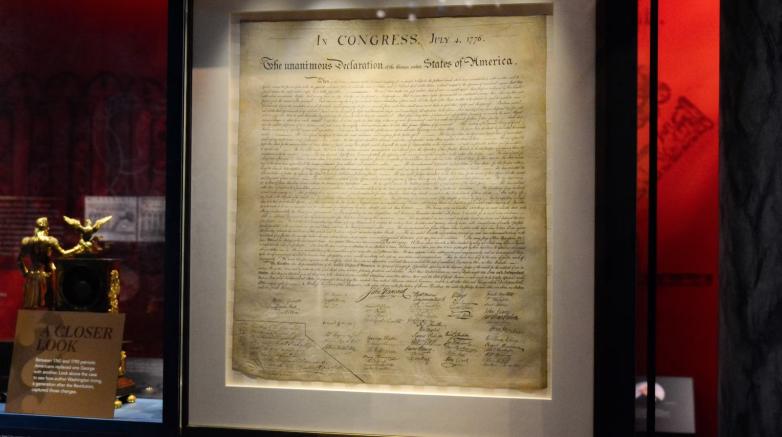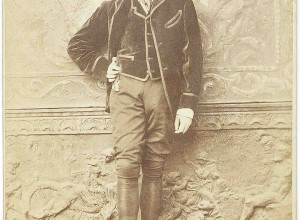Rare 1823 Engraved Printing of the Declaration of Independence on View

Declaration of Independence engraving by William Stone, on loan from DOI Holdings LLC
On August 2, 1776, the Declaration of Independence was signed by John Hancock and members of the Continental Congress. Visitors to the Museum of the American Revolution in Philadelphia now can see a rare 1823 engraved printing of the Declaration that belonged to the last surviving signer, Charles Carroll.
On August 2, 1826, Carroll signed the engraving to celebrate the 50th anniversary of the original Declaration signing. The printing is on display alongside two rare and related letters of John Hancock (1776) and John Quincy Adams (1832). The items, on loan to the Museum from the Norcross family, are on view through October 2023.
“We are grateful to the Norcross family for their generosity in loaning to us these incredible treasures which serve as a reminder that we have been marking the anniversary of the Declaration of Independence since the lifetime of the signers themselves,” said Dr. R. Scott Stephenson, President and CEO of the Museum. “As we approach the Declaration’s 250th anniversary in 2026, we embrace the opportunity for celebration of the progress we have made and reflection on the unfinished work of ensuring that the promise of the American Revolution endures.”
The Declaration printing, engraved by William J. Stone, is as close as visitors can get to seeing the American Declaration of Independence as it looked right after the founders signed it in 1776. The original Declaration, which is now held by the National Archives in Washington, D.C., with the founders’ signatures is badly faded and parts of it are illegible. To help preserve the already-damaged original, in 1820, Secretary of State John Quincy Adams hired Stone to create this near duplicate. It took Stone three years to make this copy, during which time he had the original Declaration in his shop. All subsequent copies of the Declaration have been made from the Stone engravings.
This example of the Stone engraving belonged to the last surviving signer of the Declaration of Independence, Charles Carroll of Carrollton, Maryland. In a note on the bottom left, Carroll presented the engraving to a friend and signed it “exactly half a century after having affixed his name to the original.”
The printing is on display alongside a letter from John Quincy Adams to W.B. Barney on November 19, 1832. Following Charles Carroll’s death on November 14, 1832, former President John Quincy Adams - son of another signer of the Declaration, John Adams - wrote a letter declining an invitation to join Carroll’s funeral procession that he had received from the Maryland chapter of The Society of the Cincinnati, a hereditary organization of Continental Army officers and their descendants.
Also on view is a July 8, 1776, letter from John Hancock. On the same day as the first public reading of the Declaration of Independence in Philadelphia, Hancock dispatched the first printings. This was part of his duty as president of the Continental Congress, a role that justified his famously oversized signature on the document.
In the letter, he announces that “Congress have judged it necessary to dissolve all Connection between Great Britain and the American Colonies; and to declare them free and independent states, you will perceive by the enclosed Declaration.”















